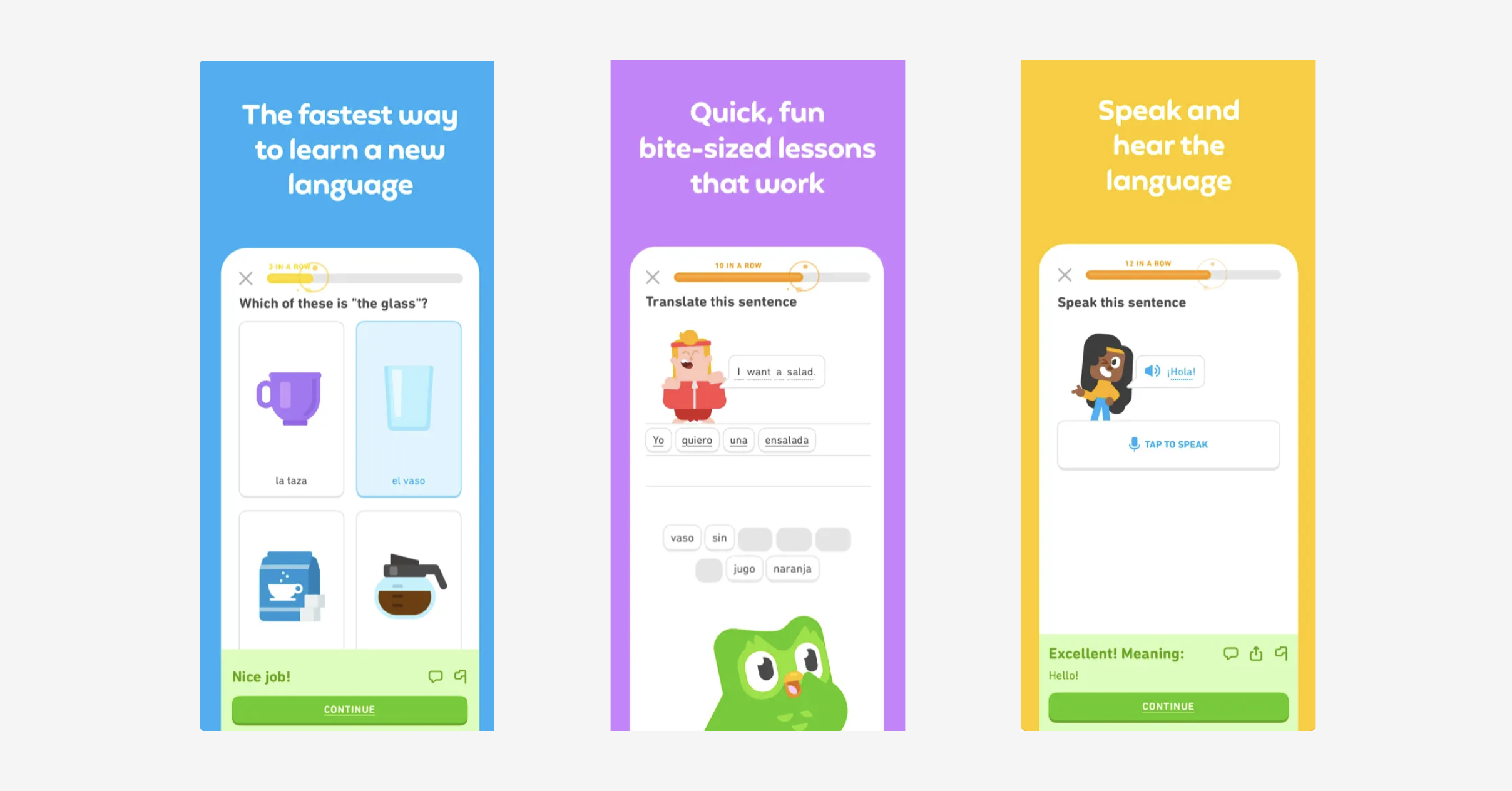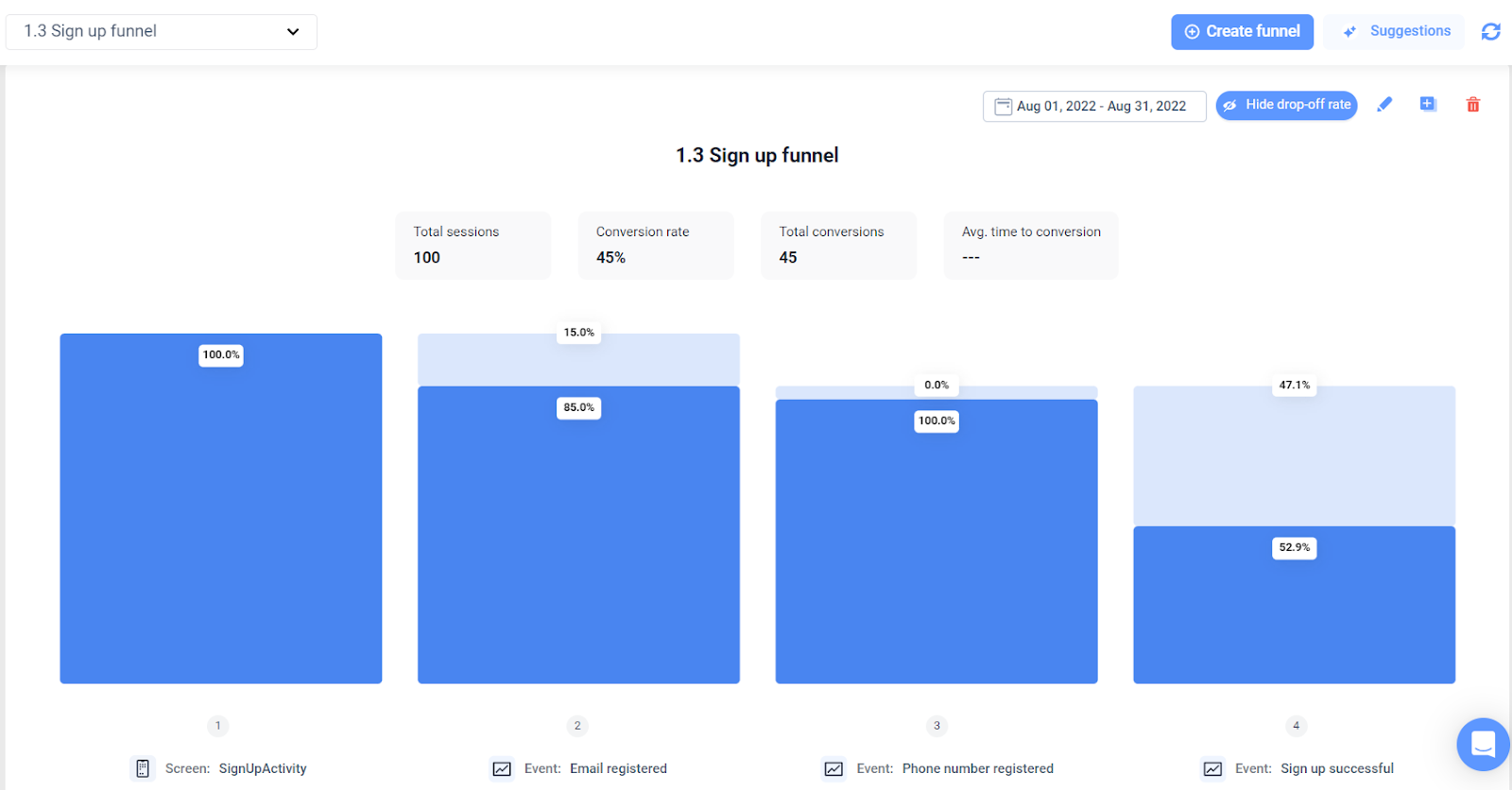How To Grow Active Users (DAU, WAU, MAU) in your Mobile App
PUBLISHED
13 June, 2024

Growth Marketing Manager
The market for mobile apps is truly massive. There were a total of 218 billion mobile app downloads in 2020 (up 55% from 2016).
Given that massive market, you’d think getting people to download and install your app would be easy. However, earning and growing active users is something that lots of mobile product teams struggle with.
So, in this UXCam guide, we’ll introduce you to several strategies you can use to grow your app’s active user base.
How to grow active users in your app
Develop an efficient onboarding process
Use UX gamification
Optimize UX Writing
Personalize based on user behavior
Let’s get started.
What is an active user?
An active user is any user that engages with your app over a period of time.
What counts as engagement? There isn’t a universally accepted definition. Usually, opening an app for any length of time can be enough to qualify a user as “active.” That said, mobile product teams can set their own standards around being active users (e.g., sessions longer than 20 seconds).
The number of active users in an app is a key metric that can be used to monitor progress toward a range of goals, including:
Growth
Engagement
Retention
Common types of active users metrics
Active users are typically broken into three related metrics:
Daily active users (DAUs)
Weekly active users (WAUs)
Monthly active users (MAUs)
By expanding or shrinking the period, you can gain a more macro or micro view of active users in your app.
For example, if you see a steady month-over-month increase in MAUs, it will likely indicate overall user growth. On the flip side, a day-over-day increase in DAUs might be the more immediate result of an app update, new feature release, or marketing campaign.
Both can be valuable but for very different reasons.
How to track active users
You'll need a mobile app analytics tool to track DAUs, WAUs, and MAUs.
For an example of this process, consider UXCam. We assign each user a unique ID that allows you to measure accurately and track activity (i.e., gestures, events, behaviors, etc.) over time without compromising privacy and security.
When they engage with your app within a given window, they’re counted as active users. If they come back during the same window, the second appearance of the same ID allows us to discard that second visit as a duplicate—simple!
How to grow active users
Develop an efficient onboarding process
Use UX gamification
Optimize UX Writing
Personalize based on user behavior
1. Develop an efficient onboarding process
An effective onboarding process can boost user retention by 150% over six months. And increasing retention directly impacts the number of active users your product sees.
But what makes a user onboarding process effective?
The key is guiding user segments down their respective “happy paths”—the journeys leading them to the most value in your product. Start by reading our guide to happy path testing tools to uncover your product’s happy paths.
Then build onboarding flows that guide users down these paths using tools like:
Cues & Tooltips: Visual indicators that help users navigate your product.
Product Tours: Step-by-step introduction to the features of your product.
Checklists: Lists of actions users can take to get up and running quickly.
Onboarding Journeys: Guided pathways to success based on user goals.
You can use UXCam to measure onboarding KPIs that help you uncover user struggles that occur before they have fully adopted your product. With this data, you can iterate on each flow to create a simpler experience and ensure users remain engaged throughout the process.
2. Use UX gamification
Gamification means adding game-like elements to app processes that encourage users to return more frequently.
There are tons of ways to do this, including:
Streaks: Increase DAUs by tracking the number of days a user has engaged with your app.
Achievements: Give users rewards when they hit certain milestones (e.g., “Congratulations! You’ve unlocked five new levels of the game!”).
Leaderboards: Create competitive elements by featuring people who are performing well in a given activity.
In-app currencies: Offer users a virtual currency (e.g., coins) that they can use to purchase items within the app.
Are you looking for an example of gamification done right? Enter Duolingo.

This popular app has not one, not two… but eight distinct gamification systems to keep users coming back. As a result, Duolingo has cultivated a user base of 300+ million language learners and garnered a reputation for incredible stickiness.
3. Optimize UX Writing
UX writing is the micro-copy that adds context and personality to your product—think buttons, menus, prompts, alerts… you name it. The main goal of UX writing is to work together with UX design to remove any friction points that your users might be experiencing.
With that in mind, you can optimize UX writing by following some simple best practices:
Use commands (e.g., “Start writing…” not “You can start writing here…”).
Use precise language (e.g., “Confirm pick-up” not “Confirm”).
Use familiar words (e.g., “Search” not “Find”).
Showcase your personality (e.g., “Let’s get this party started!” not “Click here to begin onboarding”).
To optimize your UX writing further, you can use a product analytics tool like UXCam and an A/B testing tool like Firebase Engage. By integrating these two tools, you can present two UX writing versions to your users and analyze which version leads to better outcomes using UXCam’s data visualizations and funnels suite.

It’s a quick way to identify which UX writing resonates with your users and refine it accordingly.
4. Personalize based on user behavior
Finally, you can use UXCam to tailor communications and messages to your users’ specific behavior.
For example, you might use UXCam’s app flow feature to see that a segment of your users struggles to complete checkout on your e-commerce app. To solve this issue, you can present them with targeted messaging prompting them to purchase.

You could also use this data to set up personalized onboarding emails for new customers or give existing ones more tailored offers.
Unlock sustainable growth with UXCam
Increasing the number of active users in your app is usually a symptom of success in some other area—marketing, UX design, or analytics. However, it’s an important metric to track if you want to grow your app’s user base sustainably.
By leveraging analytics tools like UXCam, you can make more informed decisions on improving customer engagement. These improvements don’t have to be huge or complex—even small changes like reworking copy or improving the navigation structure can have a big impact.
Get started with a 14-day free trial.
You might also be interested in the following;
How to analyze session recordings Top 51 Important Mobile App KPIs to Measure Performance
12 KPIs to measure and improve your FinTech app onboarding strategy
AUTHOR

Tope Longe
Growth Marketing Manager
Ardent technophile exploring the world of mobile app product management at UXCam.
What’s UXCam?
Related articles
Conversion Analysis
Mobile App Session Replay: Ultimate Guide 2025
Unleash the power of session...

Jonas Kurzweg
Growth Lead
Conversion Analysis
Top 51 Important Mobile App KPIs to Measure Performance 2025
51 mobile app KPIs — determine the KPIs and metrics that matter the most for your...

Jonas Kurzweg
Growth Lead
Conversion Analysis
5 Best User Journey Mapping Tools
Explore the top 5 user journey mapping tools that empower businesses to visualize and optimize customer experiences. Uncover valuable insights and enhance UX...

Tope Longe
Growth Marketing Manager

